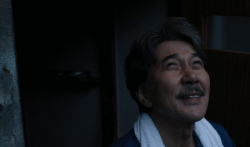My sophomore-year roommate would often keep much later hours than I would. It wasn’t unusual for him to come in at two or three in the morning after a night studying in Lauinger. But instead of just climbing into bed and passing out, like I would have done if I had just endured hours in our lovely library, he would pour himself a drink of whatever we had lying around, grab the latest issue of the New Yorker, and sit out on our LXR balcony—reading with his nightcap.
Last year I began to see the appeal of these late-evening intoxicants. After a night spent working on Arabic grammar or statistical regression, there was nothing quite as relaxing as settling down with a small glass of Jameson’s. It could have just been my imagination, but I could feel the tension and stress slowly slipping out of my body with each sip. It never became a regular occurrence—my lack of a smoking jacket always made me feel very self-conscious—but I’d roll it out on particularly stressful evenings.
The origin of the nightcap dates back to the late eighteenth century, a simpler time when men wore caps to sleep, and ghosts visited the wealthy on Christmas Eve to make them more generous. The cap was worn with pajamas because it kept in body heat, which was pretty important in those drafty, insulation-free houses.
A glass of liquor before bed was considered a complement to the work of the cap, sedating the imbiber and making him feel warmer (ironically, by lowering body temperature). Up until the mid-twentieth century, physicians recommended nightcaps to patients suffering from insomnia and other sleep disorders.
Like most enjoyable things—smoking, drinking while pregnant, and intravenous drug use—the scientific evidence has come out against the nightcap. It seems that regularly drinking before bed can impair an individual’s ability to get a good night’s sleep. According to some studies, habitual nightcaps can actually halve the amount of REM sleep that someone gets in one night—a problem that, surprisingly, cannot be solved by listening to Automatic for the People a few times.
But my favorite part of the history of the nightcap is its mid-century use as a euphemism for sex. After a night out between an unmarried man and woman, he would walk her back to her house and politely say good night—at which point, she would stop him and invite him up for a “nightcap.” Although it’s unlikely that there was actually alcohol imbibed, this kind of nightcap also wreaks havoc on their sleep cycle, likely sacrificing more REM sleep than a glass of Hennessey would cost you.
While our culture’s imbibing has changed, the drinks that people enjoy before bed have not. The most popular nightcaps include a liqueur or spirit, such as Irish crème or kahlua mixed with heated milk and a sprinkling of cinnamon—ending up, essentially, with a boozed-up hot cocoa. Personally, I have always been partial to a neat whiskey or scotch—call me an alcoholic, but there is an appealing simplicity in a drink that can get the job done more quicklly and with less.
Even though the so-called “medical experts” seem to believe that nightcaps might not be good for your overall “health,” it doesn’t rule out the occasional late-night drink. On those days that warrant a nightcap, I’m gladly willing to trade some sleep for the momentary tranquility that comes with each sip.
Go back for a nightcap with Daniel at dnewman@georgetownvoice.com.




